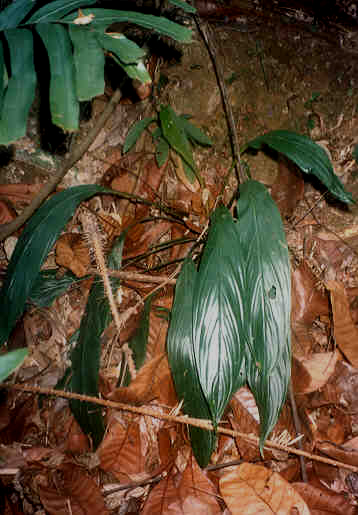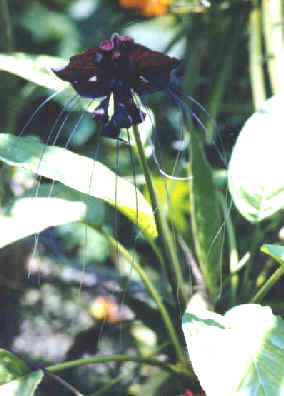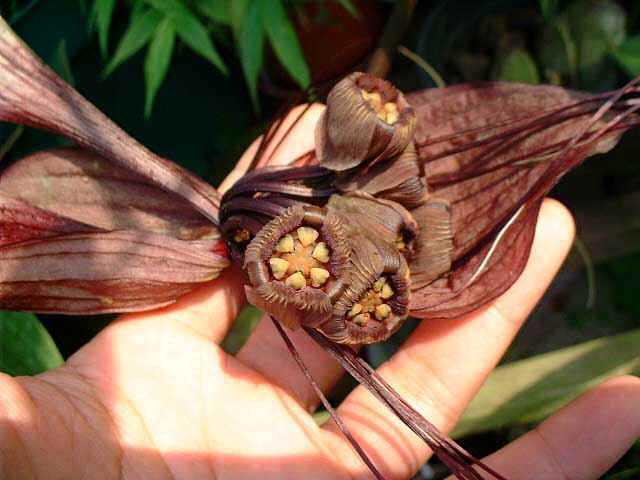
T. integrifolia (syn cristata)

This is the same species, but the colour is dark burgundy

I recieved some unknown bulbs from Thailand and when it started growing, it looked like a highly unusual Amorphophallus with dark stems and finely divided leaf. It then bloom to become the common Tacca leontopetaloides and my heart sank. Supposedly, early botanist George Rumphius made a similar error by describing a plant which was intermediate of the two. Fortunately, he was more famous for his other good work inside the six volume monumental Herbarium Amboinensis.


